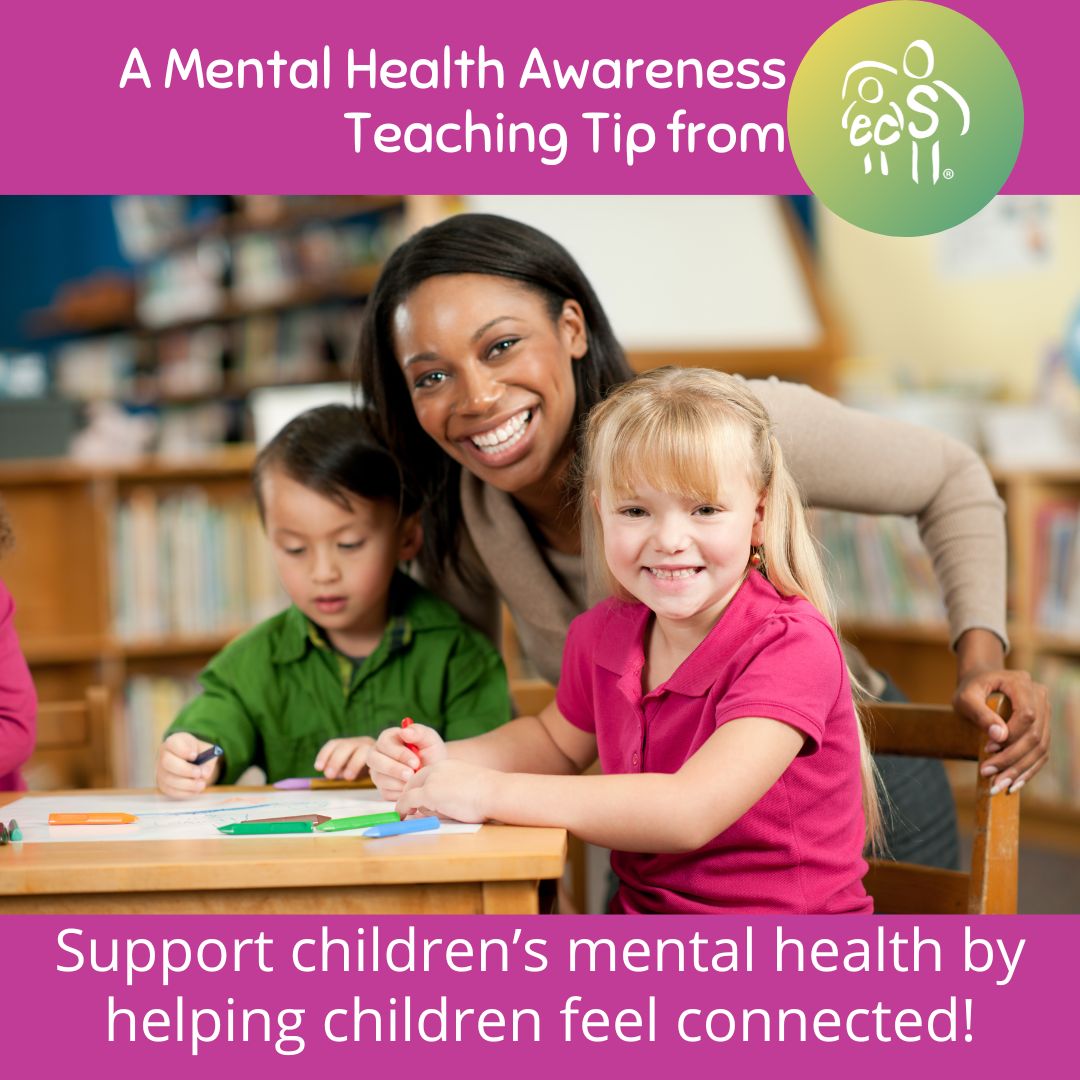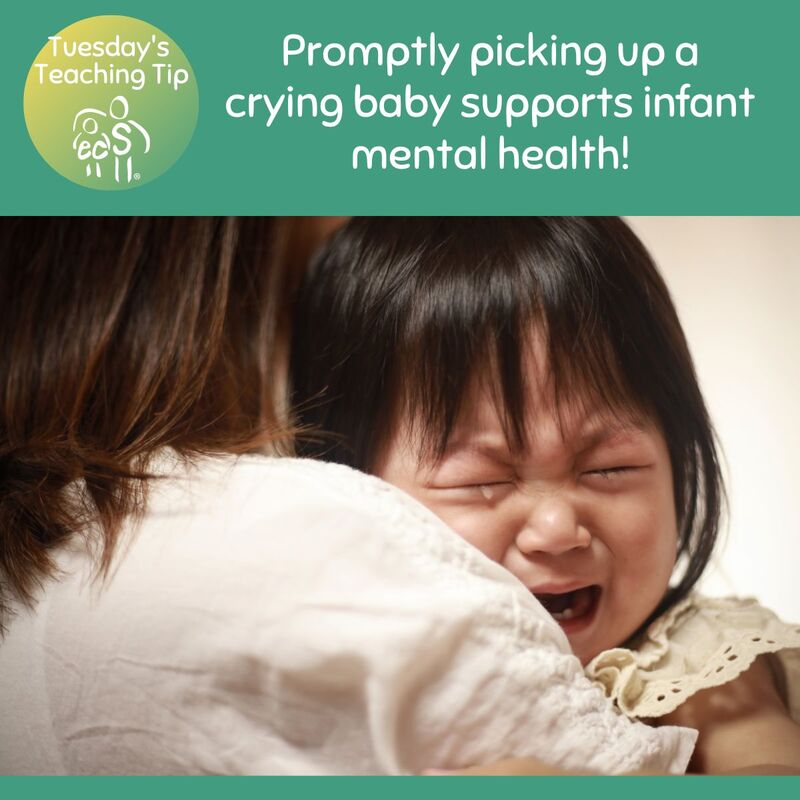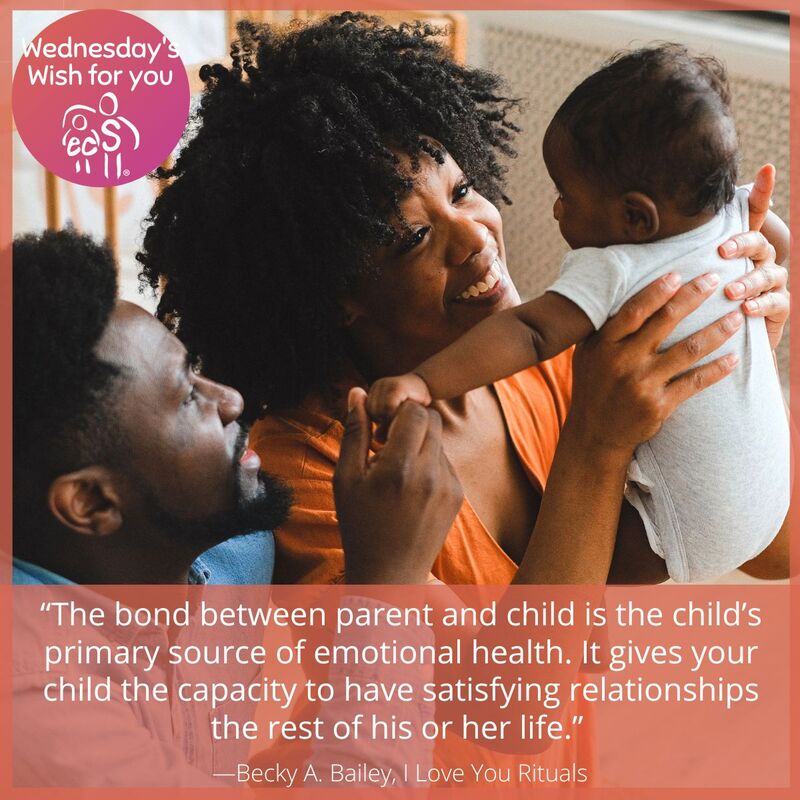
May is Mental Health Awareness Month, so I’d like to help you support the mental health of infants and young children!
According to Zero to Three, infant and early childhood mental health is “the developing capacity of the child from birth to 5 years of age to form close and secure adult and peer relationships. This impacts a child’s abilities to experience, manage, and express a full range of emotions, and explore the environment and learn—all in the context of family, community, and culture.”
Mental health for children is the same thing as healthy social and emotional development. When we help young children learn about themselves and about getting along with others, we are fostering their mental health as well.
Today I’m sharing ways you can promote the mental health of infants and young toddlers.
1. Respond quickly to infants’ needs
Babies require a lot of attention! They depend on the adults in their lives for all their needs, transitioning at an incredible rate into more independent little people. While parents and caregivers are busy meeting their physical needs, an infant’s social and emotional foundation is also being established.
Meeting an infant’s mental health needs not only comforts them in the moment, it also affects their future mental health, their ability to learn and process the world and information around them, and their ability to tolerate frustration, solve problems, and adapt to situations. These are all lifelong skills, crucial to learning, jobs and relationships.

2. Attend to attachment
Speaking of attachment, it is one of the most important factors affecting infant mental health. Having secure attachment relationships to their caregivers – including you – is absolutely crucial for babies.
Here is a quote from HiMama’s blog (4) that shares tips for supporting attachment:
- “Be sensitive and empathic: Children need your consistent responsiveness and warmth, especially during the early years. By responding and being sensitive to their signals (e.g. their cries) will help the child trust you to meet their needs.”
- “Respond calmly: Model good behavior and control your own emotions and behaviors. Children learn from us and how we interact with them.”
- “Be involved: It is important to interact, be present and positively engaged with your child. For example, sing to them, read to them, and smile at them.”
- “Be nurturing: Show positive behavior through body language (e.g. eye contact, touch, facial expressions and laugh) when you interact with your child. Show them that you are interested in them to help develop their sense of attachment and security.”
Well said! For my own words about attachment, listen to the podcast episode (5)!

3. Watch for warning signs
These behaviors may sometimes be seen in healthy developing children. The time to be concerned is when something becomes a pattern. After making efforts to ensure that the child is safe and feels a sense of security, family caregivers may want to consult their medical or mental health provider . He/she can refer the family to other resources if needed.
Here are some signs that an infant may be experiencing a problem with mental health, quoted from an online article from a behavioral health provider (6):
- Not wanting to be held
- Not being able to be comforted when upset, or being upset for longer than seems right
- Fussiness (e.g., screaming, whining, crying)
- Eating and sleeping difficulties
- Not making eye contact with the parent or caregiver, or avoiding eye contact with others
- Not seeming to interact with others
- Not making noises very often, like cooing or babbling sounds
- Not using language as expected for their age
- Losing skills they could once do
- Tantrums
- Aggression (e.g., hitting, biting, pinching)
- Anger, frustration, head-banging
- Separation anxiety or withdrawal from parent
- Developmental concerns (e.g., autistic behaviors, language problems)
It can be difficult for families to hear that their child may be experiencing a problem. But if we kindly, gently, and objectively share our concerns AND point them to sources of help, we provide a valuable service to them and their children. I will always appreciate my daughter’s toddler teachers for doing just that!
References & Resources
- Bailey, B. A. (2000). I love you rituals. HarperCollins.
- The Center on the Social and Emotional Foundations for Early Learning Vanderbilt University. Research synthesis: Infant mental health and early care and education providers. csefel.vanderbilt.edu/documents/rs_infant_mental_health.pdf
- Centers for Disease Control and Prevention. (2023, June 6). Help your child grow and thrive. www.cdc.gov/ncbddd/actearly/
- Louis, A. (n.d.) Promoting healthy attachments with children. HiMama Early Education Blog. www.himama.com/blog/promoting-healthy-attachments/
- McKittrick, A. (Host). (n.d.) Attachment parenting explained with Diane Goyette and Gabrielle Holt (No. 43). [Audio podcast episode]. In Parenting in the First Three Years. Nurtured Noggins. nurturednoggins.com/43-attachment-parenting/
- Stapert, E. (n.d.). Infant mental health – What is it and why is it important? Manhattan Psychology Group. manhattanpsychologygroup.com/infant-mental-health-what-is-it-and-why-is-it-important/
- Zero to Three. (2016, March 7). Infant and Early Childhood Mental Health. www.zerotothree.org/resource/infant-and-early-childhood-mental-health/
I’m excited to share my blog!
Whether you are a child care provider or administrator, a teacher, a parent, or a helping professional who supports young children and families, I hope you get some helpful tips to make your job easier and more enjoyable!
- Keeping Children Safe in Summer Heat: Tips for 2025 - July 14, 2025
- Books on Black History Month for Young Children - February 5, 2024
- Winter Play and Book Ideas for Young Children - January 8, 2024
- Diane Goyette
- No Comments
